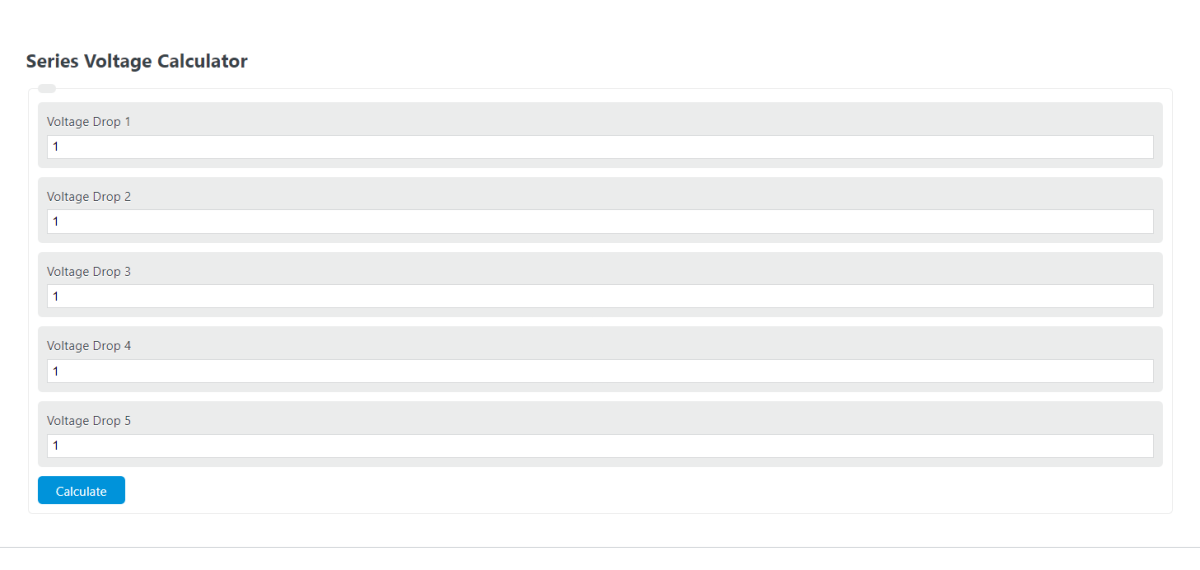Enter the up to 5 different voltage drops into the calculator to determine the Series Voltage.
- All Electrical Calculators
- Voltage Calculator
- Parallel Voltage Calculator
- Series Resistance Calculator
- Thevenin Voltage Calculator
- Total Voltage Calculator
- Source Voltage Calculator
Series Voltage Formula
The following formula is used to calculate the Series Voltage.
Vseries = SUM (Vd)
Variables:
- Where Vseries is the Series Voltage (volts)
- Vd is the up to 5 different voltage drops
How to Calculate Series Voltage?
The following two example problems outline the steps and information needed in order to calculate the Series Voltage.
Example Problem #1:
- First, determine the up to 5 different voltage drops. In this example, the up to 5 different voltage drops is measured to be 4,3,10.
- Finally, calculate the Series Voltage using the formula above:
Vseries = SUM (Vd)
Inserting the values from above into the equation yields:
Vseries = SUM (4+3+10) = 17 (volts)
FAQ
What is the significance of calculating series voltage in electrical circuits?
Calculating series voltage is crucial in electrical circuits to ensure that the total voltage drop across the series elements equals the source voltage. This helps in designing circuits that function correctly and safely by preventing overvoltage or undervoltage situations that could damage electronic components.
Can the formula for series voltage calculation be applied to any number of voltage drops in a series circuit?
Yes, the formula Vseries = SUM (Vd) is versatile and can be applied to calculate the total series voltage for any number of voltage drops in a series circuit. However, the example provided mentions up to 5 different voltage drops for simplicity and clarity in calculation.
How does the series voltage calculation differ from parallel voltage calculation?
In a series circuit, the series voltage is the sum of all individual voltage drops across components, as each component has a different voltage drop. In contrast, in a parallel circuit, the voltage across each component is the same as the source voltage, regardless of the number of components. Thus, the calculation approach and formula differ significantly between series and parallel circuits.
